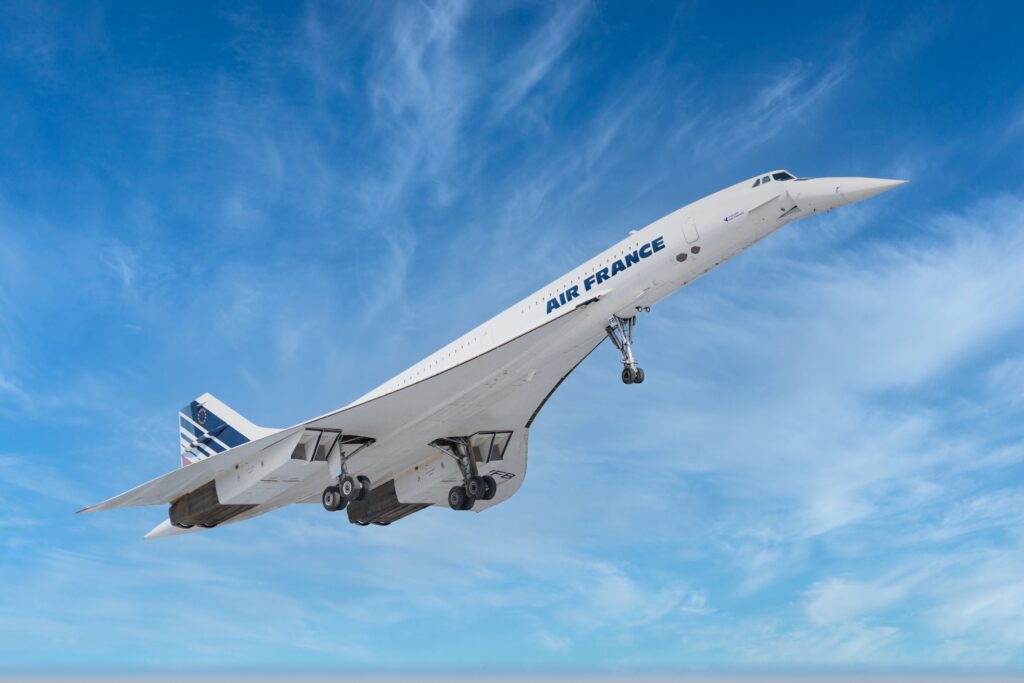China is entering the world of supersonic air travel with a bold step. The country’s top aircraft maker, the Commercial Aircraft Corporation of China (COMAC), is working on a new jet called the C949. This plane is designed to fly faster than the speed of sound while being quieter and more efficient than past jets like the Concorde.
According to Chinese media and the South China Morning Post, the C949 will reach speeds of Mach 1.6, which is about 1,200 miles per hour. While that’s a bit slower than the Concorde’s top speed of Mach 2.04, the C949 will have a 50% greater range. That means it can fly farther without refueling.
A Quieter Jet Could Change the Game
The Concorde, though fast, had a major problem: it was too loud. Its sonic boom, caused by breaking the sound barrier, made it illegal to fly over many land areas. It also had high fuel costs and could only carry about 100 passengers. These limits led to its retirement in 2003.
The C949 is being built with a curved fuselage, which helps reduce the shockwaves that cause sonic booms. Reports say it could bring noise levels down to that of a common hairdryer. If true, this could be a huge step forward. The jet might be allowed to fly over land without breaking noise rules.
This detail comes from a recent academic paper published in China. While COMAC hasn’t confirmed the findings yet, the research shows serious progress. The idea is to design a supersonic jet that’s not just fast, but quiet and efficient too.
The World Is Racing Toward Supersonic Travel Again
China is not the only country trying to bring back supersonic flights. In the United States, NASA and Lockheed Martin are working on the X-59. This sleek jet is expected to fly at Mach 1.4 and reach heights of 55,000 feet. It is specially designed to make a “low-boom” sound, about as loud as a car door closing.
The X-59 passed a major cruise control test earlier this year and could have its first flight later this year. The project’s goal is to show that quiet supersonic travel is possible, which could help change air travel rules in the U.S. and around the world.
Another player is Boom Supersonic, a private U.S. company. Boom is building a jet called the Overture, which it hopes to launch by 2030. The company already has interest from big airlines like United, American, and Japan Airlines.
Boom’s test jet, called the XB-1, reached a speed of 1,207 km/h and an altitude of 35,000 feet. The company claims the flight did not produce a sonic boom, thanks to new design features. If proven, this would make the Overture one of the quietest supersonic jets ever built.
Europe’s Focus: Sustainability and Sound
Meanwhile, in Europe, the focus is more on the environmental impact of supersonic flight. Several EU-funded research projects are working to find ways to make these jets cleaner and quieter.
The RUMBLE project (2018–2022) studied how to measure and reduce sonic booms. The SENECA project (2020) explored ways to improve engine performance. And the ongoing MORE AND LESS initiative is working on sustainable materials and noise reduction.
These efforts are important because high-speed jets use a lot of fuel and produce more emissions. By focusing on green tech and better designs, Europe hopes to make supersonic flight possible without harming the planet.
Why Supersonic Travel Matters
Flying faster than sound is not just about saving time. It could revolutionize business, tourism, and even global diplomacy. Imagine flying from New York to Beijing in just 6 hours, instead of 13. That kind of speed would reshape how people think about travel and trade.
But this future will only be possible if jets like the C949, X-59, and Overture can meet strict rules for noise, safety, and emissions. Governments will also have to update their flight laws, many of which still ban supersonic travel over land.
China’s Bold Move
With the C949, China is showing that it wants to lead in this field. The jet’s mix of speed, range, and quiet design makes it a serious contender in the race. While it’s still early, this project adds more fuel to a growing global push to bring supersonic air travel back to life.
If COMAC succeeds, it could mark the start of a new era—one where supersonic travel is not just for the rich, but for everyone.


